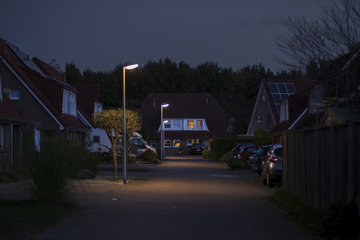Regulatory thickets – a problem?
A game-theoretical study shows when bureaucracies tend to excessive regulations
Text: Stefano Barbieri und Kai A. Konrad

The growing thicket of regulatory rules in professional and private life is a well-known phenomenon in modern societies. Whereas specific rules and regulations may seem sensible, an excess of too strict and too deep regulations often creates problems, to the detriment of sensibility. Quite apart from issues of free personal development, this excess can curb the ability to innovate and inhibit the dynamics of growth, and thus undermine the foundations for societal welfare.
These dangers are well-known and the complaints are widespread. Some countries have even launched institutions to dismantle obsolete regulatory provisions. Nevertheless, the trend towards more regulation continues apace. The question arises: is there excessive regulation, or are the form and extent of regulatory activities merely the inevitable and necessary corollary of an ever more differentiated, ever richer, and ever more complex economy and society? Are the costs of regulation simply the price for a healthy economy? Or are there systematic reasons why the regulatory measures taken tend to be excessive, too radical, and too far-reaching?
In the game theoretical analysis entitled ‘Overzealous Rule Makers’, we identify systematic reasons that can explain when bureaucracies develop regulatory rules that are too numerous, and when these rules tend to be extreme variants within the spectrum of possible rules. In particular, we analyse situations where several authorities share responsibility for creating regulatory rules on an economic or life sector. Examples of such concurrent regulatory jurisdictions abound.
One may think that bureaucrats tend to be more sluggish in the face of overlapping responsibilities with other bureaucracies: why not simply wait for the co-responsible authorities to take the initiative and bear the cost of rule-making? Shared and competing responsibilities could therefore lead to wait-and-see thinking, and thus to an under-regulation problem.
The situation changes dramatically, however, when the co-responsible authorities desire very different rules. The more different—or extreme—the desired rules or objectives are, the more threatening is the idea for each authority that another will take the initiative first. The only way to counter this is to take action oneself. In this way, the problem of wait-and-see behaviour is reversed. Instead, the problem becomes a rule-making race: each authority takes action sooner rather than later. Rule-making not only enforces a rule the agency is comfortable with, but it also prevents the enforcement of a rule it finds undesirable. An authority may even become active when its own costs of making rules are higher than the immediate benefits from the transition from the status quo to its preferred rule variant. The authority is willing to bear these high costs because it can avert an even more unpleasant outcome: the implementation of a disliked rule by the other authority. Rule-making is thus not driven by the need to improve on the status quo. Rather, the authority is driven by the fear of being preempted by another authority. Fear of undesirable changes by the other authority can therefore fuel the regulatory process.
This preemptive regulatory activity, driven by fear of the actions of others, is particularly relevant for authorities that prefer extreme positions within the spectrum of possible regulatory variants: for them, being preempted by another authority with rules at the other end of the spectrum is especially unwelcome. In contrast, an authority that may see a genuine need for regulation, but would prefer a more moderate rule, has a significantly lower incentive to participate in this rule-making race.
The conclusion of our analysis is that, comparing the willingness to incur costs for making rules, it is especially the authorities with extreme ideas and goals that become active, and that they become active even when their cost of rule-making is larger than their direct benefit from their chosen rule over the status quo.
This article was originall published on Oxford University Law Blog.












